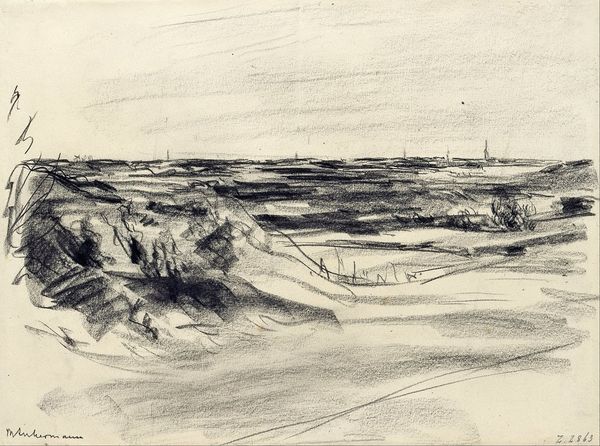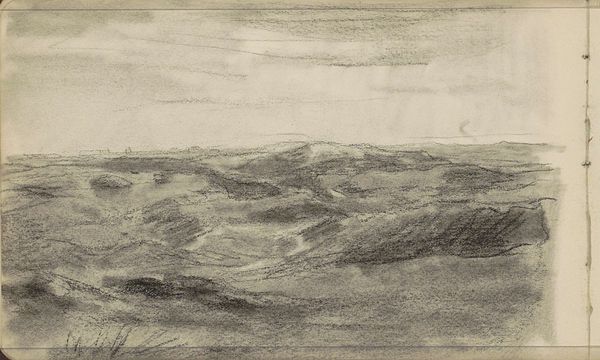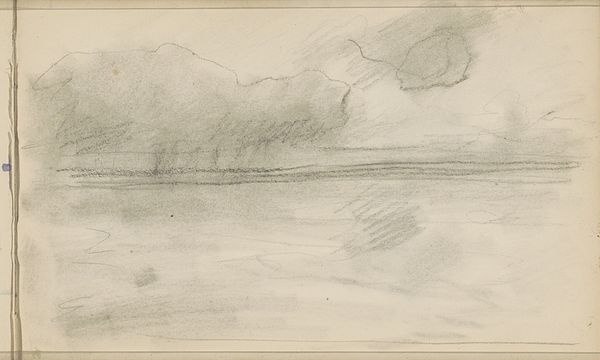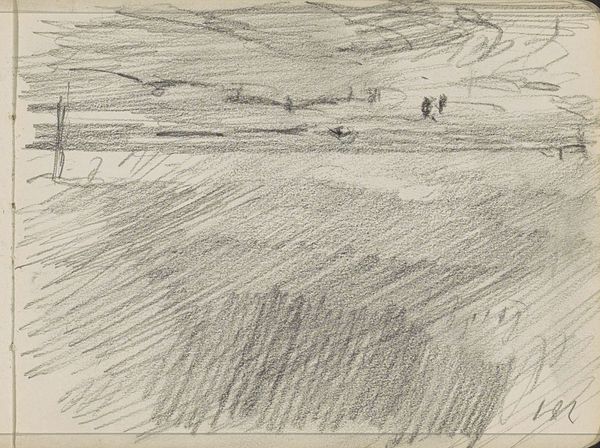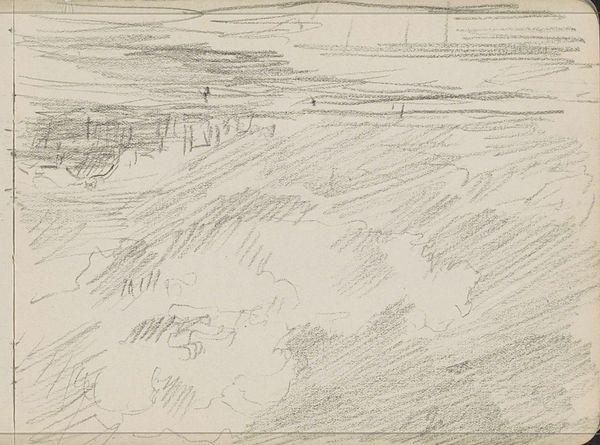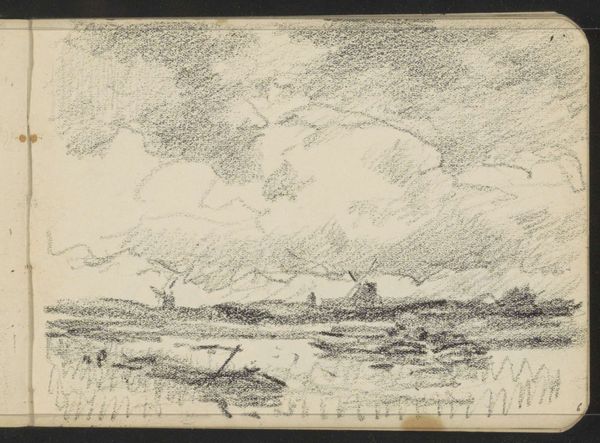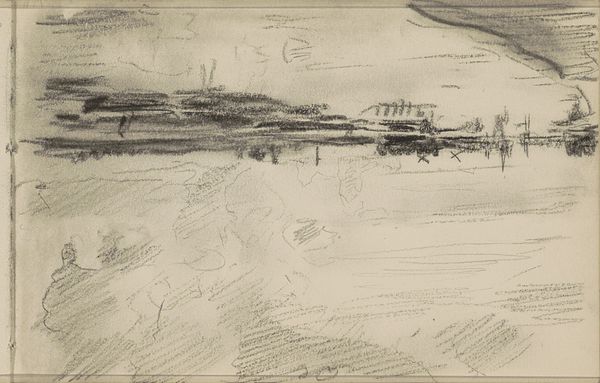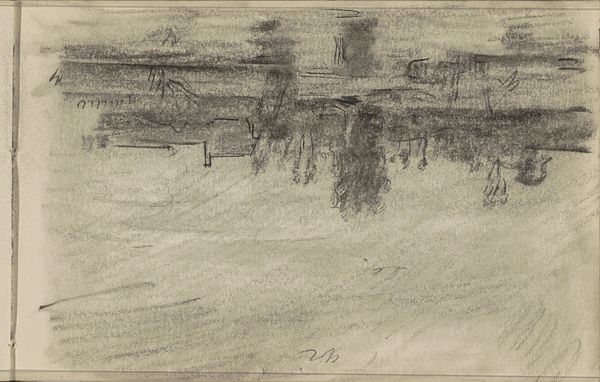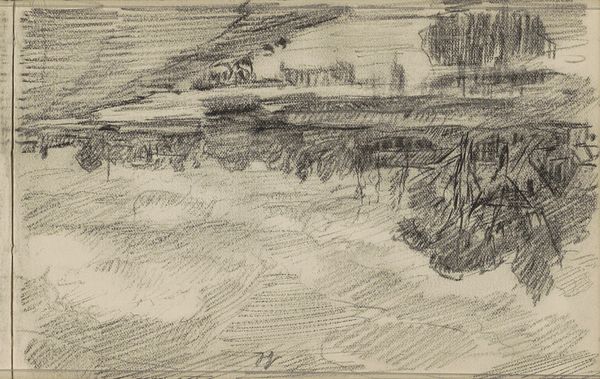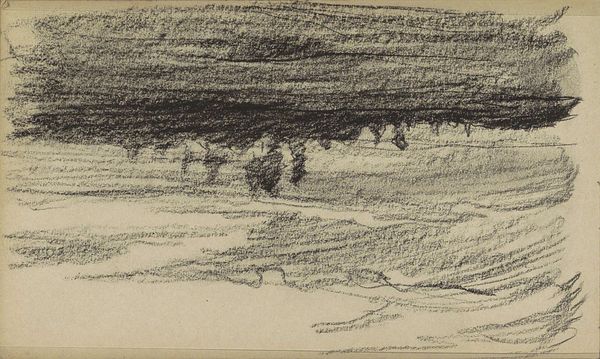
Copyright: Rijks Museum: Open Domain
Curator: Editor: We’re looking at “Figuur op een pier, mogelijk in Scheveningen,” circa 1920, by Johan Antonie de Jonge. It's a pencil drawing. I find the tonal gradations captivating. What's your interpretation? Curator: Notice how the artist uses the humble pencil, a tool of mass production, to depict a scene, likely a leisure spot for the bourgeoisie. The material process elevates the mundane, a scene possibly meant for postcard production, into a considered composition. Does that resonate? Editor: Absolutely. So, you’re saying the choice of pencil democratizes the subject matter? It makes me wonder about the artist’s social commentary on class and leisure. Curator: Precisely. The labor involved in producing such a detailed drawing with a common material highlights the accessibility of art while simultaneously pointing to the social strata enjoying the pier. Consider also the pier itself - a constructed space for consumption. How does the drawing process interact with that concept? Editor: It’s interesting. The act of sketching feels immediate, almost like a form of artistic labor responding to the manufactured leisure space. It creates this interplay between art and commodity. Curator: Exactly. And by choosing to depict it in monochrome with visible strokes, he also foregrounds the work of art, revealing his manipulation of material. Editor: That makes perfect sense! I had initially viewed this as simply an impressionistic landscape, but understanding the work through its materials and social context brings a new depth. Thank you.
Comments
No comments
Be the first to comment and join the conversation on the ultimate creative platform.
